How Electric Motors Work
Electric motors operate based on the principles of electromagnetism. When an electric current flows through a wire in the presence of a magnetic field, a force is exerted on the wire, causing it to move. This forms the basis for the operation of electric motors.Key Components of an Electric Motor
- Stator: The stationary part of the motor that contains coils of wire that produce a magnetic field when an electrical current is passed through them.
- Rotor: The rotating part of the motor that is driven by the magnetic force produced by the stator. It is usually connected to the device or machinery being powered.
- Commutator (in some types of motors): A device that reverses the direction of the current in the rotor windings, ensuring that the rotor continues to rotate in a single direction.
- Power Source: The electrical power supply that provides the current to drive the motor.
Types of Electric Motors
There are several types of electric motors, each with its own unique features and applications:- DC Motors: Direct current motors that operate using a constant voltage and produce continuous rotation.
- AC Motors: Alternating current motors that are commonly used in household appliances and industrial machinery.
- Induction Motors: AC motors that operate based on the principle of induction, where the rotor is not connected to an external power source.
- Brushless DC Motors: DC motors that use electronic commutation instead of a mechanical commutator, offering improved efficiency and reliability.
Applications of Electric Motors
Electric motors are widely used across various industries and in numerous applications, including:- Automotive industry for powering electric vehicles and hybrid cars
- Manufacturing for driving conveyor belts, pumps, and other machinery
- Household appliances such as refrigerators, washing machines, and vacuum cleaners
- Aerospace for controlling aircraft systems and propulsion
- Renewable energy systems such as wind turbines and hydroelectric generators
Study Guide for Electric Motors
To study electric motors effectively, consider the following key points:- Understand the basic principles of electromagnetism and how it applies to the operation of electric motors.
- Learn about the different types of electric motors and their specific characteristics and applications.
- Explore real-world examples of electric motor applications in various industries and everyday life.
- Examine the components of electric motors and how they work together to convert electrical energy into mechanical energy.
- Consider the environmental and energy efficiency aspects of electric motors, especially in the context of sustainable energy solutions.
◂Science Worksheets and Study Guides Third Grade. Weather
Study Guide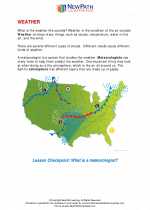 Weather
Weather  Worksheet/Answer key
Worksheet/Answer key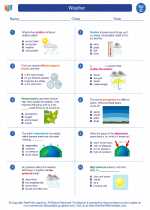 Weather
Weather  Worksheet/Answer key
Worksheet/Answer key Weather
Weather  Worksheet/Answer key
Worksheet/Answer key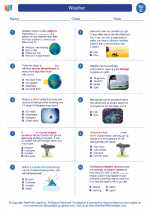 Weather
Weather  Vocabulary/Answer key
Vocabulary/Answer key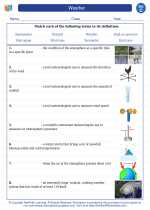 Weather
Weather  Vocabulary/Answer key
Vocabulary/Answer key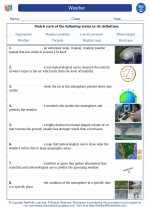 Weather
Weather 

 Worksheet/Answer key
Worksheet/Answer key
 Worksheet/Answer key
Worksheet/Answer key
 Worksheet/Answer key
Worksheet/Answer key
 Vocabulary/Answer key
Vocabulary/Answer key
 Vocabulary/Answer key
Vocabulary/Answer key

The resources above cover the following skills:
EARTH AND SPACE SCIENCE (NGSS)
Earth’s Systems
Students who demonstrate understanding can:
Represent data in tables and graphical displays to describe typical weather conditions expected during a particular season.